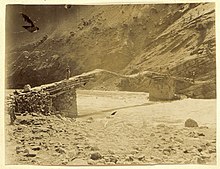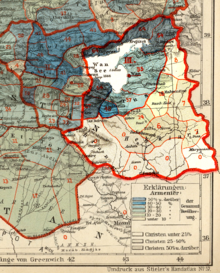
Assyrians are an indigenous ethnic group native to Mesopotamia, a geographical region in West Asia. Modern Assyrians descend directly from the ancient Assyrians, one of the key civilizations of Mesopotamia. While they are distinct from other Mesopotamian groups, such as the Babylonians, they share in the broader cultural heritage of the Mesopotamian region. Modern Assyrians may culturally self-identify as Syriacs, Chaldeans, or Arameans for religious, geographic, and tribal identification.

The Assyrian Church of the East (ACOE), sometimes called the Church of the East and officially known as the Holy Apostolic Catholic Assyrian Church of the East (HACACE), is an Eastern Christian church that follows the traditional Christology and ecclesiology of the historical Church of the East. It belongs to the eastern branch of Syriac Christianity, and employs the Divine Liturgy of Saints Addai and Mari belonging to the East Syriac Rite. Its main liturgical language is Classical Syriac, a dialect of Eastern Aramaic, and the majority of its adherents are ethnic Assyrians who speak differing Akkadian influenced dialects of Eastern Aramaic in everyday life.

Alqosh is a town in the Nineveh Plains of northern Iraq, a sub-district of the Tel Kaif District situated 45 km north of the city of Mosul.

Hakkâri Province, is a province in the southeast of Turkey. The administrative centre is the city of Hakkâri. Its area is 7,095 km2, and its population is 287,625 (2023). The current Governor is Ali Çelik. The province encompasses 8 municipalities, 140 villages and 313 hamlets.

The Sayfo, also known as the Seyfo or the Assyrian genocide, was the mass murder and deportation of Assyrian/Syriac Christians in southeastern Anatolia and Persia's Azerbaijan province by Ottoman forces and some Kurdish tribes during World War I.
Qudshanis, is a small village in the Hakkâri District of Hakkâri Province, Turkey. The village is populated by Kurds of the Pinyanişî tribe and population was 30 in 2023.

Petros Elia of Baz, better known as Agha Petros, was an Assyrian military leader during World War I. Considered a national hero for the Assyrians, and other Christian minorities in the Middle East.

Assyrians in Iran, or Iranian Assyrians, are an ethnic and linguistic minority in present-day Iran. The Assyrians of Iran speak Assyrian Neo-Aramaic, a neo-Aramaic language descended from the eastern dialects of the old Aramaic language with elements of Akkadian, and are Eastern Rite Christians belonging mostly to the Assyrian Church of the East and also to the Ancient Church of the East, Assyrian Pentecostal Church, Chaldean Catholic Church and Assyrian Evangelical Church.
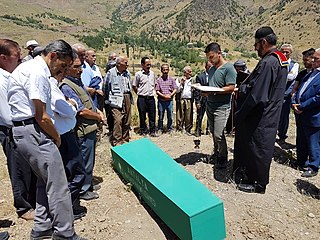
Assyrians in Turkey or Turkish Assyrians are an indigenous Semitic-speaking ethnic group and minority of Turkey who are Eastern Aramaic–speaking Christians, with most being members of the Syriac Orthodox Church, Chaldean Catholic Church, Assyrian Pentecostal Church, Assyrian Evangelical Church, or Ancient Church of the East.

The Assyrian homeland, Assyria, refers to the homeland of the Assyrian people within which Assyrian civilisation developed, located in their indigenous Upper Mesopotamia. The territory that forms the Assyrian homeland is, similarly to the rest of Mesopotamia, currently divided between present-day Iraq, Turkey, Iran and Syria. In Iran, the Urmia Plain forms a thin margin of the ancestral Assyrian homeland in the north-west, and the only section of the Assyrian homeland beyond the Mesopotamian region. The majority of Assyrians in Iran currently reside in the capital city, Tehran.

The Simele massacre, also known as the Assyrian affair, was committed by the Kingdom of Iraq, led by Bakr Sidqi, during a campaign systematically targeting the Assyrians in and around Simele in August 1933.

Mar Shimun XX Paulos served as the 118th Catholicos-Patriarch of the Assyrian Church of the East.
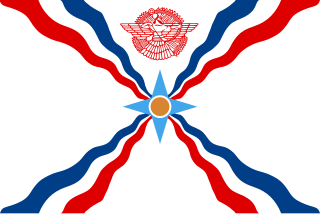
The Assyrian independence movement is a political movement and ethno-nationalist desire of ethnic Assyrians to live in their indigenous Assyrian homeland in northern Mesopotamia under the self-governance of an Assyrian State.

Malik Khoshaba Yousip was an Assyrian tribal leader of the Tyari tribe who played a significant role in the Assyrian independence movement during World War I.
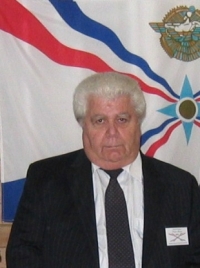
Hirmis Aboona was an Assyrian historian who was known for his publications concerning the history of the Assyrians in northern Iraq.

A series of massacres in Hakkari in the years 1843 and 1846 of Assyrian Christians were carried out by the Kurdish emirs of Bohtan and Hakkari, Bedir Khan Beg and Nurullah Beg along with allied Assyrian tribes who were against the rule of Shimun XVII Abraham. The massacres resulted in the killing of 4,000 Assyrians.

Andaç is a village in the Uludere District of Şırnak Province in Turkey. The village is populated by Kurds from the Kaşuran tribe and had a population of 3,386 in 2023.

Çığlı is a village in Hakkâri Province in southeastern Turkey. It is located in the district of Çukurca District and the historical region of Hakkari. It had a population of 1,911 in 2023.

The Assyrian volunteers were an ethnic Assyrian military force during WW1, led mainly by General Agha Petros Elia of Baz and several tribal leaders known as Maliks under the spiritual leadership of the Catholicos-Patriarch Mar Shimun Benyamin allied with the Entente Powers described by the English pastor and author William A. Wigram as Our Smallest Ally. The Assyrian volunteers were described as “the Christian army of Revenge” by the British Major E.W.C. Noel.
Akkaya is a village in the Çukurca District in Hakkâri Province in Turkey. The village is populated by Kurds of the Alan tribe and had a population of 755 in 2023.



